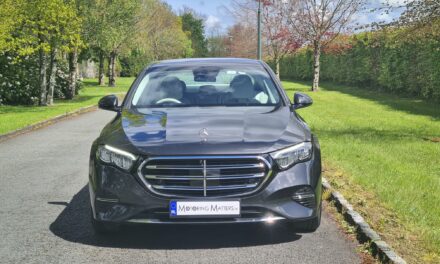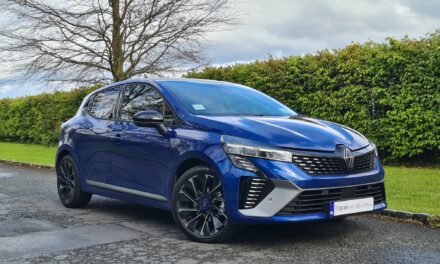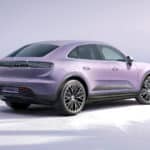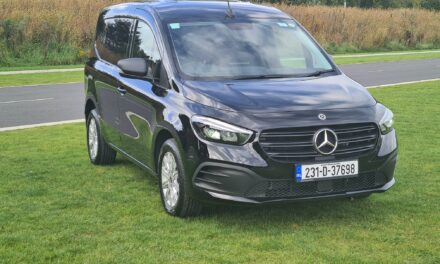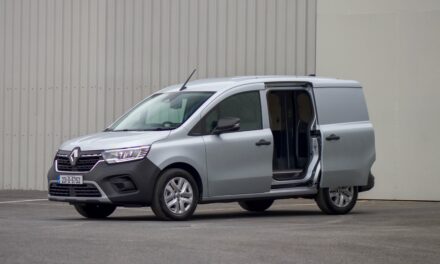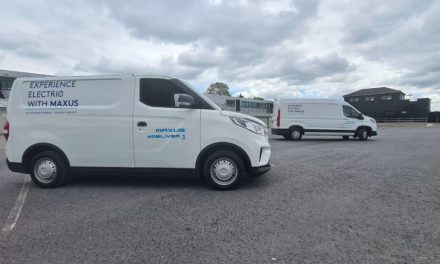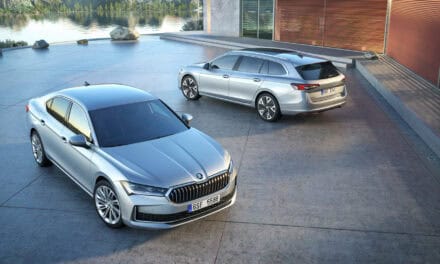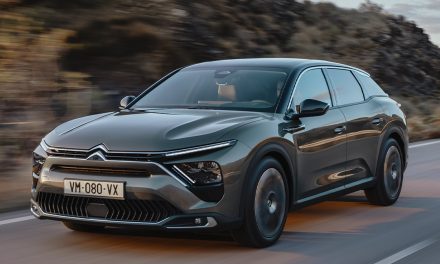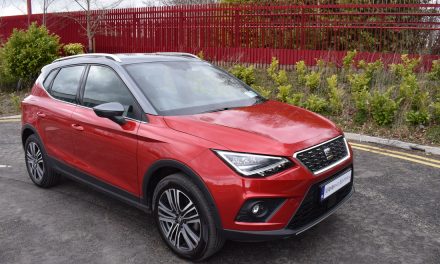
All-New Toyota C-HR Hybrid – An Icon Evolved.
All-New Toyota C-HR – An Icon Evolved.
The original C-HR self-charging hybrid was a huge commercial success for Toyota, but the Japanese brand has even greater ambitions for the recently launched second-generation model. There is no denying that the strikingly-designed new C-HR has a terrific road presence, and it has the ability to turns heads wherever it goes. The exterior design is dominated by sharp zig-zag angles, and a distinctive front and rear light design, along with a short front overhang that makes the car appear poised and dynamic from every angle. In order to enhance aerodynamic efficiency, the new C-HR does without a rear wiper, with the rear screen angled so that water drops slide away. Conceived, designed and engineered in Europe – just like its predecessor – the second-generation model delivers the type of premium quality and sustainability that European customers demand.
Premium Design.
Premium design features include Toyota’s first use of flush-mounted door handles, and rear doors that link directly into the rear lamp units without an additional frame. This seamless, aerodynamic look continues with tight shut lines, cleverly concealed cameras and parking sensors, and precise profiling of the rear spoiler. Ingeniously, the C-HR model name is incorporated into the rear light bar and illuminates specially choreographed ‘welcome’ and ‘goodbye’ sequences. The option of bi-tone paintwork on selected models serves to extend the standard black roof finish into the rear quarter panels, further emphasising the strong rear styling. In Ireland, the new C-HR Hybrid is available in Sport, Sport Plus (+), and Sol trim grades with ascending levels of standard comfort, convenience, safety and infotainment features across the range, while buyers of the recently launched C-HR Plug-in Hybrid model can choose between Sport Plus (+), Sol, Premiere Edition and GR Sport Premiere Edition trim grades. Powering the C-HR Hybrid is a 1.8-litre petrol engine combined with a front-mounted electric motor, and the engine size increases to 2.0-litres in the PHEV version.
Latest Hybrid Tech.
The new C-HR is equipped with fifth-generation hybrid technology to deliver a class-leading balance of power and emissions. This latest hybrid tech features a new lithium-ion battery pack, which is located beneath the rear seats and provides 14% higher output despite being 1.5kg lighter and more compact than the battery in the original C-HR. A new power control unit contributes to efficiency through improved cooling and lower electrical losses, while operating at higher frequency to reduce cabin noise. Larger front brake discs and a redesigned brake pedal enhance control and provide a more natural braking feel. Drive modes consist of Custom, Sport, Normal and Eco settings, each of which alters the driving characteristics of the car to suit the requirements of the driver. This is also an EV Hold setting, along with a ‘B’ option to increase the braking force, and thereby regenerate lost energy into enhanced battery range.
Enhanced Sustainability.
The new Toyota C-HR sets new sustainability and emissions reduction standards, employing twice the amount of recycled materials as its predecessor. Extensive testing and analysis have ensured that the appearance, feel and durability of the materials are equal to, or better, than those with no recycled content. In a European first, the new C-HR uses high-strength steel in its centre pillars for enhanced torsional rigidity. Production emissions have been further reduced by injection moulding external elements such as the bumpers in a new resin material that is pre-coloured in the mould, and therefore doesn’t require painting. Further savings have been achieved by adopting a new automated painting process using water-based paints, and by adopting a new animal-free material as an alternative to leather for the steering wheel cover. The new C-HR is also the first Toyota to use a new synthetic seat material made from recycled plastic bottles.
Harmonious Cabin.
Inside, Toyota hasn’t deviated much from the stylish cabin that was a success with the first C-HR. The cabin is spacious, modern and ergonomically designed, with lots of soft-touch surfaces and a high level of build quality throughout. The entry-level Sport model has an 8-inch display screen with cloud-based navigation, an onboard voice agent and wireless smartphone connection for both Apple CarPlay™ and Android Auto™. All other versions get the larger 12.3-inch Toyota Smart Connect + set-up with embedded navigation, smartphone connectivity and lots more besides. A 12.3-inch driver information cluster provides all of the vital driving data, and Toyota has succeeded in making the cockpit driver-focused with clearly legible graphics. Premium materials and thoughtful detailing create a harmonious feel throughout the cabin. The design follows a ‘wing’ concept with a slimline dashboard that flows directly into the door panels and centre console, creating a wrap-around theme. Practicality comes courtesy of a wireless charging point big enough for two smartphones and new storage options, including an additional high-level glove box. Drivers can use the MyT smartphone app for remote control of certain functions, including locking and unlocking, pre-conditioning the cabin temperature, and starting the vehicle. An enhanced ambient lighting system is adopted for the first time on any Toyota. It uses a palette of up to 64 colours to subtly reflect changes in cabin temperature and the passing of time, even to help inform passengers whether it is safe to open the door and exit the vehicle.
Cutting-Edge Safety Tech.
All versions of the new C-HR benefit from the latest suite of Toyota Safety Sense active safety and driver assistance features. For added convenience, future software updates within this system can be automatically delivered over the air, so there is no need to arrange for updates to be applied by a Toyota retailer. Key developments within the safety portfolio include Acceleration Suppression, a system that reduces any sudden use of the throttle when the system detects a collision risk with a vehicle immediately ahead. Also new is Proactive Driving Assist, which works at low speeds to smooth deceleration when the driver comes off the throttle before entering a bend or approaching a slower vehicle ahead. It works in tandem with Steering Assist, which recognises a bend ahead and adjusts steering weight to help the driver make a smooth and stable turn.
Test Car.
My C-HR SOL Hybrid test car was finished in Pearl Red Bi-tone Pearlescent paintwork for a truly stylish look, while standard-fit 19-inch black machined-face alloy wheels add an extra layer of visual drama. When it comes to performance, the 1.8-litre petrol hybrid mix delivers a combined 140bhp with 142Nm of torque from the engine and a further 185Nm from the electric motor – all of which is channelled through an electronically-controlled continuous variable (automatic) transmission. The C-HR Hybrid can sprint from 0-100km/h in 9.9 seconds, on its way to a top speed of 175km/h (where permitted), and it has an official fuel consumption figure of 4.8l/100km on a WLTP combined driving cycle, along with a CO2 emission figure of 108-110g/km. The original C-HR’s fun factor has evolved for the new model, so a highly dynamic and engaging driving experience is guaranteed. With MacPherson struts at the front and redesigned multi-link suspension at the rear, the car feels agile and well-planted at all times. It rides nicely across road surfaces, passing over bumps in a refined and well-controlled manner. The C-HR is the ideal companion in urban settings, as it will spend most of its time in EV mode with zero emissions, but the cars’ precise handling, along with its reduced body roll and good levels of grip, mean that it is entertaining to drive on twisty back roads, while also having the ability to perform admirably at motorway speeds too.
Verdict & Pricing.
The new Toyota C-HR combines standout styling, engaging driving dynamics and class-leading efficiency, and it is sure to build on the outstanding success of its predecessor. The new Toyota C-HR Hybrid range is priced from €40,520 for the Sport model, with the Sol version (as tested) priced at €45,010 (excluding delivery and metallic paint). Pricing for the new C-HR PHEV starts at €45,315 in Sport Plus (+) trim.
Visit www.toyota.ie for further information.

